#Carrozzeria Bertone
Explore tagged Tumblr posts
Text
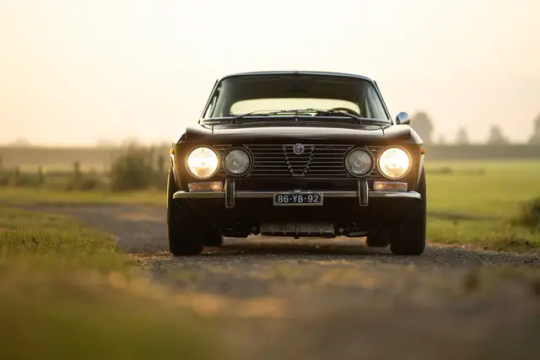

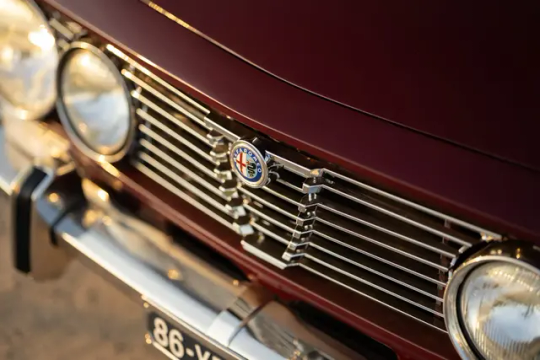

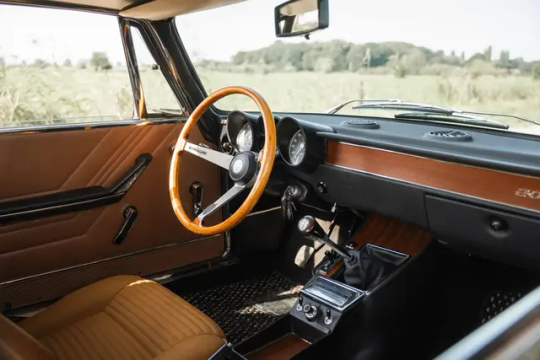
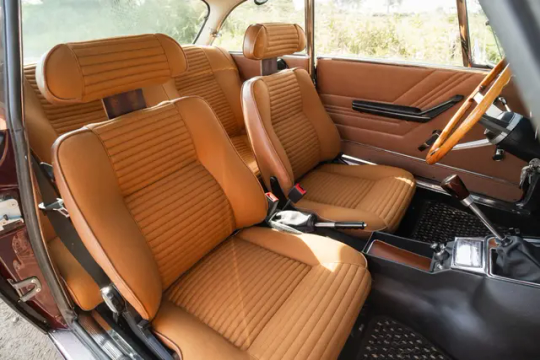
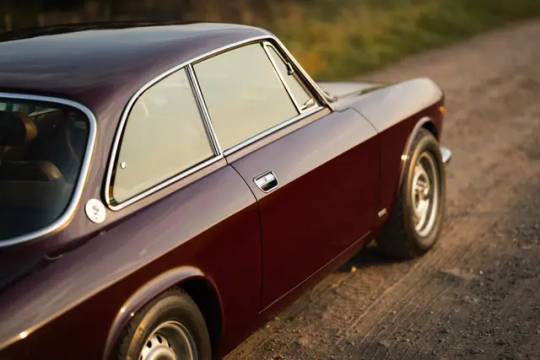
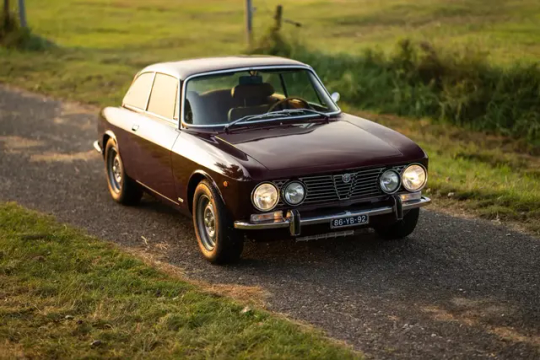
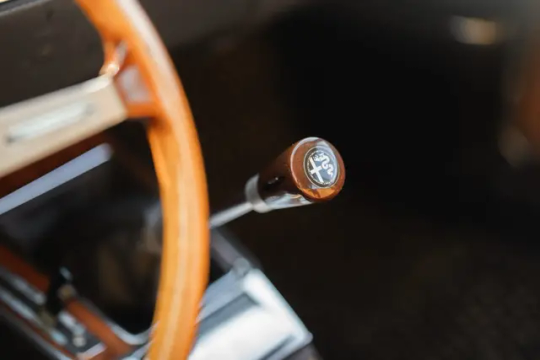
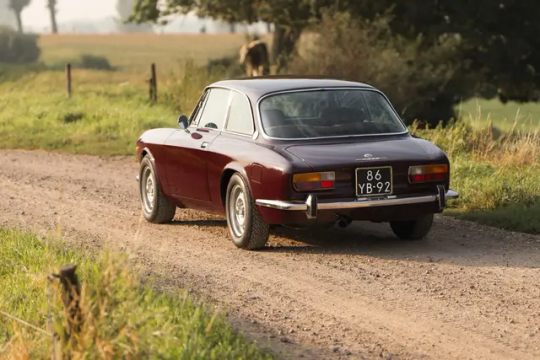
Euro 1973 Alfa Romeo GTV 2000
#alfa romeo#gtv#gtv 2000#vintage cars#automobile#Giorgetto Giugiaro#Carrozzeria Bertone#BaT#Dream Cars#this color combo#Rosso Amaranto#Alfa Romeo Classiche
34 notes
·
View notes
Photo







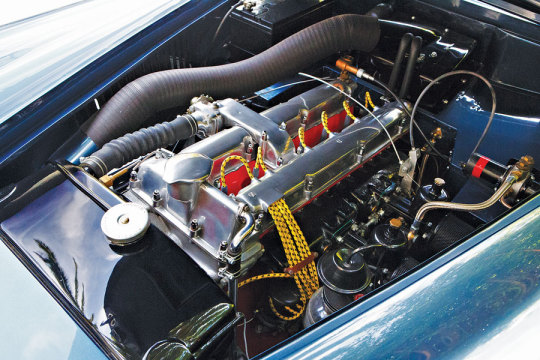
Aston Martin DB2/4 Bertone Spider (1 of 3).
In 1953, Stanley Arnolt purchased five sequential Aston Martin DB2/4 chassis and sent them to Carrozzeria Bertone to be fitted with custom coachwork. While the even-numbered chassis were fitted with opulent, luxurious bodies, 503, 505, and 507 were fitted with a distinctive sporting design penned by one of the most talented and prolific designers of the 1950s and 1960s, Franco Scaglione.Scaglione’s credits include the incomparable Alfa Romeo B.A.T. cars, the Siata 208 CS coupe, the Abarth Porsche, the Alfa Romeo Tipo 33 Stradale, and a wide variety of one-offs and important production cars.Of the three chassis fitted with this body, two were designed for outright competition use and were minimally equipped for the purpose; the third, this car, LML505, was a more luxurious example equipped with a full windscreen, intricate grille, bumpers, a lavishly appointed interior with unique features, and full soft top.Arnolt showed the suitably opulent LML505 at the 1954 New York Auto Show, where it was fitted with an Aston Martin badge in an attempt to seduce company owner David Brown into making the Bertone-bodied roadster an Aston Martin production model. The gesture obviously left its mark, with Aston Martin taking almost five years to catch on. Arnolt lived just long enough to see the Italian firms Touring and Zagato being used to turn out some of the most competitive Aston race cars of the early 1960s.
#Aston Martin DB2/4 Bertone Spider#Carrozzeria Bertone#Franco Scaglione#Alfa Romeo B.A.T#Siata 208 CS#Abarth Porsche#Alfa Romeo Tipo 33 Stradale
147 notes
·
View notes
Text








Iso Grifo Series II Targa, 1971, by Bertone. The original Grifo was designed by Giorgetto Giugiaro while he worked for Bertone in his 20s. Carrozzeria Pavesi carried out the conversion work to turn the hardtop coupé into a targa. The Series I, of which 13 were made, came with an acrylic rear window (see yellow car in the brochure) however Series II cars had a solid glass rear window. The Series II also boaster a number of improvements including semi-concealed headlamps and a 300hp version of the 5.7 litre Chevrolet V8 coupled with a 5-speed ZF manual gearbox. Only 4 Series II Targa models were built by Pavesi.
#Iso#Iso Grifo#Iso Grifo Series II Targa#Iso Grifo Targa#Bertone#coachbuilt#Carrozzeria Pavesi#1971#1970s#Giorgetto Giugiaro#Chevrolet V8#targa#open roof#Pavesi#dead brands
162 notes
·
View notes
Text
Los Alfa Romeo BAT: Cuando la belleza y la aerodinámica se dan la mano (y cómo conquistaron el mundo moderno)
¿Alguna vez soñaste con viajar al futuro en un auto? Descubre cómo los Alfa Romeo BAT combinan diseño, historia y emoción en un solo viaje. 🚗💨 #DisegnoItaliano #CochesClasicos #Inspiracion #AlfaRomeo
Ing. Jose María Noriega Courtesy RM Sotheby’s. Imagina por un momento que estás en los años 50, una época dorada donde el diseño automotriz era una mezcla de ingenio técnico y pura fantasía. Ahora imagina tres autos tan elegantes, tan avanzados y tan fuera de este mundo que parecen naves espaciales disfrazadas de coches. Estos son los Alfa Romeo BAT: el BAT 5, el BAT 7 y el BAT 9d. Tres…
#Aerodinámica automotriz#AI#Alfa Romeo BAT#autos a escala#Autos únicos subastados#Autos concepto históricos#Autos de exhibición#Autos de lujo italianos#Bertone Carrozzeria#Coches clásicos italianos#Coleccionismo#coleccionismo automovilístico#coleccionismo de autos#ColeccionismoAutomotriz#curso coleccionismo#Curso de Coleccionismo#Diseño automotriz italiano#Excelencia en diseño automotriz#Exclusividad automotriz#Expero#Franco Scaglione diseño#Historia del automóvil italiano#Ing Jose Maria Noriega C.A.S.#Ingeniería automotriz italiana#Innovación en diseño automotriz#Legado Alfa Romeo#Mercadotecnia#Mercadotecnia automotriz Italia#Publicidad#RM Sotheby&039;s subasta
0 notes
Text












Fiat 1100 Stanguellini carrozzeria Bertone 1949. - source Ruote da Sogno.
77 notes
·
View notes
Photo





Iso Grifo Targa -rarest and loveliest of them all.
Styled at Carrozzeria Bertone by the young and up-and-coming Giorgetto Giugiaro and powered by a 5.4-litre Chevrolet V8, the four-seat Rivolta employed a steel platform chassis featuring independent front suspension, De Dion rear axle, and disc brakes all round.
356 notes
·
View notes
Text
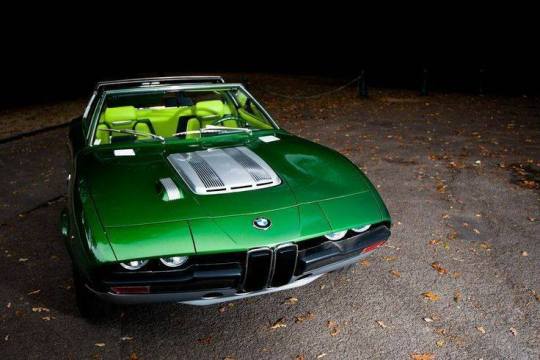
BMW 2800 Spicup
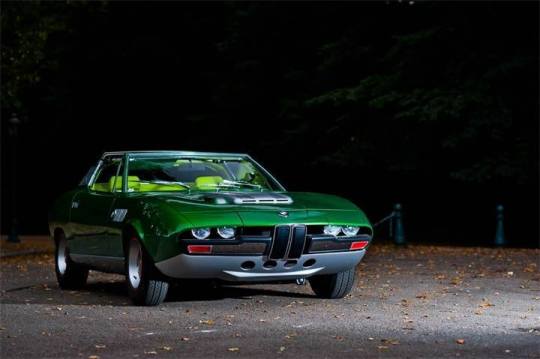
BMW 2800 Spicup
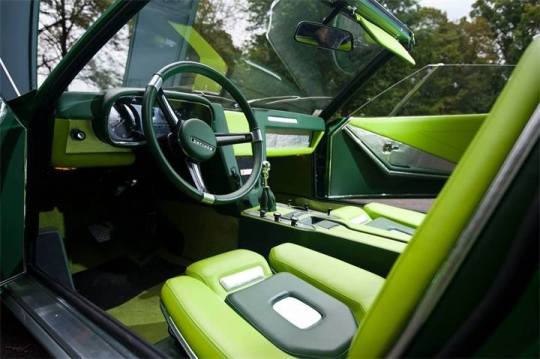
BMW 2800 Spicup interior
BMW 2800 Spicup
CHASSIS
#V.0010
With the BMW 2800 Spicup, the Turin designer opted for a name which expresses the theme of the car, that is, its metamorphosis between spider and coupé and back again: the name Spicup is in fact spider + coupé.
BMW 2800 Spicup: The Bertone design is a reworking of the glorious 507 Spider produced by the German carmaker. It is based on the chassis of the 2500 saloon, shortened from 269 cm to 234 cm, with a 2800 cc. engine, which was already being mounted on the coupé presented by BMW in the same period. The considerable dimensions of the mechanical components were handled by creating almost excessively fluid vertical lines. At the same time, the relatively important tail and wings become the car’s focal point. The rollbars had to satisfy a combination safety needs and design criteria, and Bertone solved the problem with an automatic mechanism which also contained the elements for the transformation from spider to coupé and back again. The BMW 2800 Spicup was presented at the 1969 Geneva Motor Show. After premiering on Carrozzeria Bertone’s stand, the Spicup was exhibited at the Concorso d’Eleganza in Allassio in June and finally at that year’s Frankfurt Motor Show. Its subsequent whereabouts are not totally clear, though it appears that the car was sold to a private owner shortly afterwards. Several sources have reported the Spicup being present in the mid-1970s at the German mega-dealer Auto Becker in Düsseldorf, which had a special showroom devoted to exotic cars at that time. A few years later, the Spicup was purchased by a Dutch motor dealer who decided to keep the car and obtained regular road registration. The exterior colour was changed from green to orange and the elaborate multi-hued green and silver interior was sprayed over – in black. In this configuration the car was used as a daily driver for the next 10 years, covering some 100,000 kilometres, which makes it probably the most-used one-off show car in the world! The Spicup was sold by Auction House Bonhams in 2011.
57 notes
·
View notes
Photo

1949 Fiat Stanguellini with coachwork by Carrozzeria Bertone
5 notes
·
View notes
Text
Abarth 1500 Biposto Coupé – Die Geburtsstunde eines Design-Meisterwerks

Der „Abarth 1500 Biposto Coupé“ ist ein Fahrzeug, das nicht nur durch seine Technik, sondern vor allem durch sein atemberaubendes Design in Erinnerung bleibt. Dieses außergewöhnliche Modell wurde 1952 vorgestellt und markierte einen wichtigen Meilenstein in der frühen Geschichte von Abarth. Mit seiner aerodynamischen Karosserie, die von keinem Geringeren als Carrozzeria Bertone entworfen wurde, und seiner innovativen Technik war der Abarth 1500 Biposto Coupé ein Vorbote für die sportlichen und stilvollen Fahrzeuge, für die Abarth später berühmt wurde. Die Entstehungsgeschichte Nach der Gründung von Abarth & C. im Jahr 1949 konzentrierte sich Carlo Abarth nicht nur auf die Optimierung bestehender Fahrzeuge, sondern wollte auch eigene Modelle entwickeln, die seine Vision von Leistung und Design verkörperten. Der Abarth 1500 Biposto Coupé war eines der ersten Projekte, das diese Ambitionen in die Realität umsetzte. Die Basis für das Fahrzeug bildete der Fiat 1400, dessen Chassis und Motor als Ausgangspunkt dienten. Doch Carlo Abarth wäre nicht Carlo Abarth gewesen, wenn er sich mit einem Standardfahrzeug zufriedengegeben hätte. Der Motor wurde umfassend überarbeitet, um mehr Leistung zu erzielen, und die Karosserie erhielt ein komplett neues Design, das auf maximale Aerodynamik und Eleganz ausgelegt war. Design: Ein Kunstwerk von Bertone Die Karosserie des Abarth 1500 Biposto Coupé wurde von der renommierten italienischen Designschmiede Bertone entworfen, unter der Leitung des jungen und talentierten Designers Franco Scaglione. Das Ergebnis war ein Fahrzeug, das wie ein Kunstwerk auf Rädern wirkte. Die fließenden Linien, die niedrige Dachlinie und die ungewöhnlich geformte Frontpartie machten das Coupé zu einem echten Hingucker. Besonders auffällig war die aerodynamische Gestaltung der Front, die an die Form eines Flugzeugs erinnerte. Die Scheinwerfer waren in die Karosserie integriert, und die spitz zulaufende Nase verlieh dem Fahrzeug ein unverwechselbares Erscheinungsbild. Auch das Heck war innovativ gestaltet, mit einem sanft abfallenden Profil, das den Luftwiderstand minimierte. Das Design des Abarth 1500 Biposto Coupé war seiner Zeit weit voraus und beeinflusste viele spätere Sportwagen. Es war nicht nur funktional, sondern auch ästhetisch ein Meisterwerk, das die Philosophie von Carlo Abarth – die Verbindung von Technik und Schönheit – perfekt verkörperte. Leistung trifft Innovation Unter der Haube des Abarth 1500 Biposto Coupé arbeitete ein modifizierter 1,5-Liter-Vierzylindermotor, der ursprünglich aus dem Fiat 1400 stammte. Durch verschiedene Modifikationen, darunter eine verbesserte Nockenwelle, ein optimierter Vergaser und ein spezieller Auspuff, konnte die Leistung auf 75 PS gesteigert werden. Dies mag aus heutiger Sicht bescheiden erscheinen, doch in Kombination mit dem geringen Gewicht und der aerodynamischen Karosserie war das Fahrzeug beeindruckend schnell. Dank dieser technischen Optimierungen erreichte das Coupé eine Höchstgeschwindigkeit von etwa 190 km/h, was für ein Fahrzeug der frühen 1950er Jahre außergewöhnlich war. Die Kombination aus Leistung und Aerodynamik machte den Abarth 1500 Biposto Coupé zu einem ernstzunehmenden Konkurrenten auf der Rennstrecke, wo er bei verschiedenen Veranstaltungen antrat und sein Potenzial unter Beweis stellte. Einfluss und Bedeutung Der Abarth 1500 Biposto Coupé war nicht nur ein technisches und gestalterisches Experiment, sondern auch ein Fahrzeug, das die Richtung vorgab, in die sich Abarth in den kommenden Jahrzehnten entwickeln sollte. Es zeigte, dass Abarth nicht nur in der Lage war, bestehende Fahrzeuge zu optimieren, sondern auch eigene, innovative Modelle zu schaffen, die durch Leistung und Design gleichermaßen beeindruckten. Obwohl der Abarth 1500 Biposto Coupé nie in Serie produziert wurde, sondern ein Einzelstück blieb, hatte er einen enormen Einfluss auf die Automobilwelt. Er demonstrierte, was möglich ist, wenn Ingenieurskunst und Design auf höchstem Niveau zusammenkommen, und legte den Grundstein für die späteren Erfolge von Abarth im Motorsport und bei der Entwicklung von Straßenfahrzeugen. Ein Fahrzeug für die Ewigkeit Heute ist der Abarth 1500 Biposto Coupé ein äußerst seltenes und begehrtes Sammlerstück, das die Herzen von Automobilenthusiasten auf der ganzen Welt höher schlagen lässt. Das Fahrzeug wird oft auf historischen Automobilausstellungen und bei Concours d’Elegance präsentiert, wo es für seine zeitlose Schönheit und seine technische Raffinesse gefeiert wird. Der Abarth 1500 Biposto Coupé ist mehr als nur ein Auto – er ist ein Symbol für den Pioniergeist von Carlo Abarth und ein Beweis dafür, dass Innovation und Leidenschaft die treibenden Kräfte hinter jedem Meisterwerk sind. Mit seiner einzigartigen Kombination aus Design, Technik und Geschichte bleibt dieses Fahrzeug ein Meilenstein in der Geschichte von Abarth und ein unvergessliches Kapitel in der Welt des Automobildesigns. Fazit Der Abarth 1500 Biposto Coupé ist ein Fahrzeug, das die Essenz von Abarth in ihrer reinsten Form verkörpert: Mut zur Innovation, Liebe zum Detail und der unermüdliche Wille, Perfektion zu erreichen. Mit seinem avantgardistischen Design von Bertone und seiner beeindruckenden Technik setzte das Coupé neue Maßstäbe und bleibt bis heute ein Beispiel für die Kreativität und das Können, die Abarth auszeichnen. Auch wenn es nur ein Einzelstück war, hat der Abarth 1500 Biposto Coupé einen bleibenden Eindruck hinterlassen und bewiesen, dass Carlo Abarth nicht nur ein Visionär, sondern auch ein wahrer Künstler war. Dieses Fahrzeug ist ein würdiger Vertreter der frühen Jahre von Abarth und ein Juwel in der Geschichte des Automobils. Quellennachweis: de.motor1.com; de.dyler.com; Bildnachweis: de.wikipedia.org, edvvc | Abarth 1500 Biposto, Baujahr 1952; Read the full article
0 notes
Link
0 notes
Text
Sport Auto - News F1, WRC, Endurance, NASCAR, etc.
Find a model Brand Abarth Acura Aixam Alfa Romeo Alpha Tauri Alpine Alpine Apex Apollo Arash Ariel Arrinera Automotive Artega Ascari aspark Aston Martin Audi BAC BAIC Bentley Bertone BMW Borgward Brabham Automotive Bristol Bugatti Cadillac Carrozzeria Touring Caterham Chevy Chrysler Citroen Corbellati Cupra Czinger Dallara David Brown Automotive FromTomaso Detroit…

View On WordPress
1 note
·
View note
Text

Giorgetto's brushstroke
Giorgetto Giugiaro made this publicity artwork to advertise Carrozzeria Bertone's Alfa Romeo 2600 Sprint
© carrozzeria Bertone
#carrozzeria Bertone#Bertone#Giorgetto Giugiaro#car design#designer#painter#artist#classic car#alfa romeo#alfa romeo 6c#Alfa Romeo 2600#Alfa Romeo 2600 Sprint Bertone#2600 Sprint#60s#60s icons#sixties#2600#6 cylinders#GT#Gran Turismo#sport
32 notes
·
View notes
Text

Alfa Romeo Montreal
Author: Alessio Zaccaria
#alfa#alfa romeo#montreal#8v#8 cylinders#'70s#classic#classic car#fast cars#cars#bertone#carrozzeria#carrozzeria bertone#vintage#dream cars#luxury#luxury cars#design#speed#fast#racer#italian design#italian#italy#iconic#congrega#torsolo#only the best
7 notes
·
View notes
Text



Audi 50 Prototype, 1970, by Bertone. This was the Italian carrozzeria's first proposal for Audi first small hatchback that went on sale in 1974. The prototype included innovative front and rear plastic shields that didn't make it onto the series production version. It was built on the unified platform that also underpinned the first generation Volkswagen Polo.
129 notes
·
View notes
Text

Lancia Stratos Zero concept
Designed by Marcello Gandini
Produced by Carrozzeria Bertone, 1970
Picture by Benedict Redgrove
#bertone#carrozzeriabertone#carrozzeria bertone#italian design#cars#lancia#lancia stratos#stratos#stratos zero#italian cars#inspiration#iamrobertoraveralopez#here for no reason#marcello gandini#automobile
1 note
·
View note
Photo
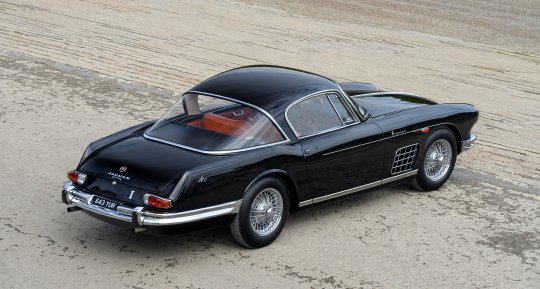
160 notes
·
View notes